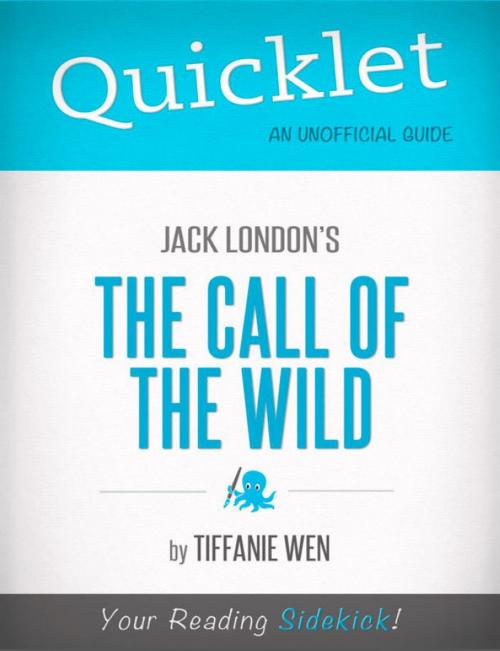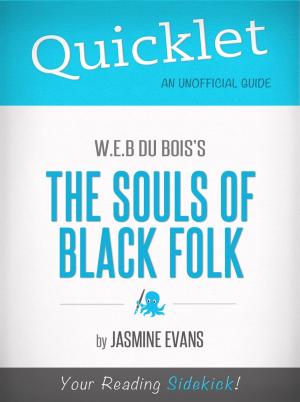Quicklet on Jack London's The Call of the Wild
Nonfiction, Reference & Language, Study Aids, Book Notes, Art & Architecture, General Art| Author: | Tiffanie Wen | ISBN: | 9781484006023 |
| Publisher: | Hyperink | Publication: | February 24, 2012 |
| Imprint: | Hyperink | Language: | English |
| Author: | Tiffanie Wen |
| ISBN: | 9781484006023 |
| Publisher: | Hyperink |
| Publication: | February 24, 2012 |
| Imprint: | Hyperink |
| Language: | English |
ABOUT THE BOOK
If you’ve ever been lucky enough to experience the company of a loyal, proud, and loving dog, you will see him or her in the opening pages of The Call of the Wild as Buck, the four-year-old St. Bernard and Scotch shepherd mix who is kidnapped from his comfortable family home in California and must learn to survive in the treacherous Yukon wilderness. And for those who have ever wondered how your friend (in my case, an 11 year-old German Shepherd named Rocky) might have acted in a different era or observed that instinctive glimmer in his eye, you will undoubtedly love reading this book.
For my younger self, the novella served as a gripping adventure story, as entertaining as it was well-written. A straightforward read that took me from the sunny suburbs of California to the bitter cold snows of northern Canada, complete with scenes of violence, jealousy, hatred, tragedy, amazing physical feats, and true love along the way.
But the real value in Jack London’s classic tale was in revisiting it as an adult, when I could better understand the subtleties of its canine interactions and identify its complex human archetypes. As an adult reader, I’m now able to appreciate the fascinating illustrations of hubris, naivety, resilience, growth, identity, greed, passion, selflessness, vengeance and liberation included in the adventure—all of which might go unnoticed by a young reader.
MEET THE AUTHOR
Tiffanie Wen is a professional writer from the San Francisco Bay Area who's written for Newsweek, Flux Hawaii, Ode Magazine and more. When she's not working, she enjoys exploring new places around the world and spending time with her dogs, Rocky and Benny.
EXCERPT FROM THE BOOK
Buck immediately begins to compromise his sense of civilization for his immediate need to survive. In fact, survival of the fittest, known in the novel as the “law of club and fang” is one of the most pervasive themes in the story.
Despite his domestic upbringing, when faced with extreme conditions and violence among his peers, Buck does what is necessary to survive. He learns to stay warm in the blistering cold, to fight aggressively, and to steal food, something he would have been too dignified to do in his earlier life, but that is now crucial to his survival in the freezing weather.
“Civilized, he could have died for a moral consideration, say, for the defence of Judge Miller’s riding whip; but the completeness of his decivilization as now evidenced by his ability to flee from a moral consideration and so save his hide. He did not steal for the joy of it, but for the clamor of his stomach. He did not rob openly, but stole secretly and cunningly, for respect for the law of club and fang.”
Eventually, Buck becomes so well-versed in the “law of club and fang” that he kills Spitz in a dramatic fight and takes over his position as lead-dog.
Buy a copy to continue reading!
ABOUT THE BOOK
If you’ve ever been lucky enough to experience the company of a loyal, proud, and loving dog, you will see him or her in the opening pages of The Call of the Wild as Buck, the four-year-old St. Bernard and Scotch shepherd mix who is kidnapped from his comfortable family home in California and must learn to survive in the treacherous Yukon wilderness. And for those who have ever wondered how your friend (in my case, an 11 year-old German Shepherd named Rocky) might have acted in a different era or observed that instinctive glimmer in his eye, you will undoubtedly love reading this book.
For my younger self, the novella served as a gripping adventure story, as entertaining as it was well-written. A straightforward read that took me from the sunny suburbs of California to the bitter cold snows of northern Canada, complete with scenes of violence, jealousy, hatred, tragedy, amazing physical feats, and true love along the way.
But the real value in Jack London’s classic tale was in revisiting it as an adult, when I could better understand the subtleties of its canine interactions and identify its complex human archetypes. As an adult reader, I’m now able to appreciate the fascinating illustrations of hubris, naivety, resilience, growth, identity, greed, passion, selflessness, vengeance and liberation included in the adventure—all of which might go unnoticed by a young reader.
MEET THE AUTHOR
Tiffanie Wen is a professional writer from the San Francisco Bay Area who's written for Newsweek, Flux Hawaii, Ode Magazine and more. When she's not working, she enjoys exploring new places around the world and spending time with her dogs, Rocky and Benny.
EXCERPT FROM THE BOOK
Buck immediately begins to compromise his sense of civilization for his immediate need to survive. In fact, survival of the fittest, known in the novel as the “law of club and fang” is one of the most pervasive themes in the story.
Despite his domestic upbringing, when faced with extreme conditions and violence among his peers, Buck does what is necessary to survive. He learns to stay warm in the blistering cold, to fight aggressively, and to steal food, something he would have been too dignified to do in his earlier life, but that is now crucial to his survival in the freezing weather.
“Civilized, he could have died for a moral consideration, say, for the defence of Judge Miller’s riding whip; but the completeness of his decivilization as now evidenced by his ability to flee from a moral consideration and so save his hide. He did not steal for the joy of it, but for the clamor of his stomach. He did not rob openly, but stole secretly and cunningly, for respect for the law of club and fang.”
Eventually, Buck becomes so well-versed in the “law of club and fang” that he kills Spitz in a dramatic fight and takes over his position as lead-dog.
Buy a copy to continue reading!















